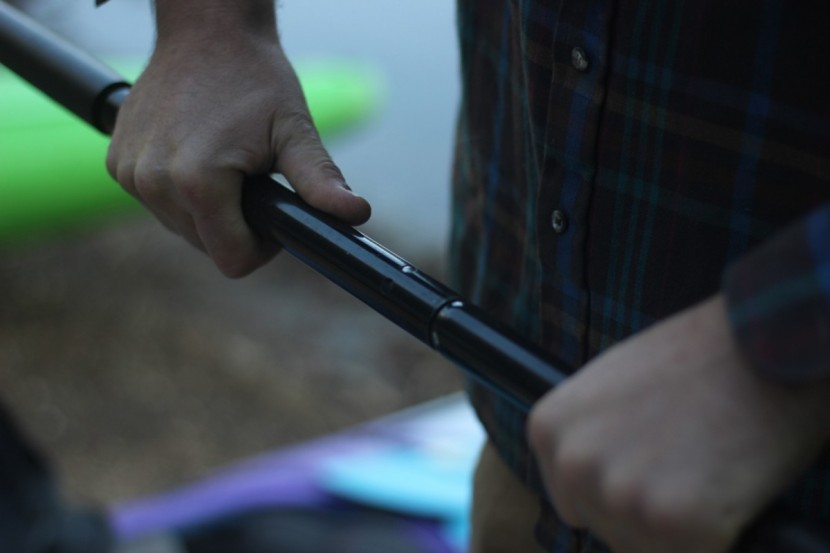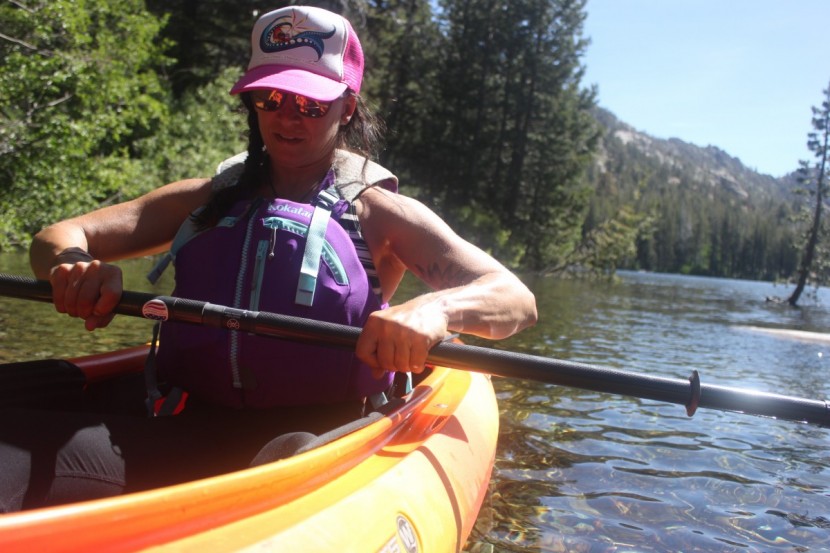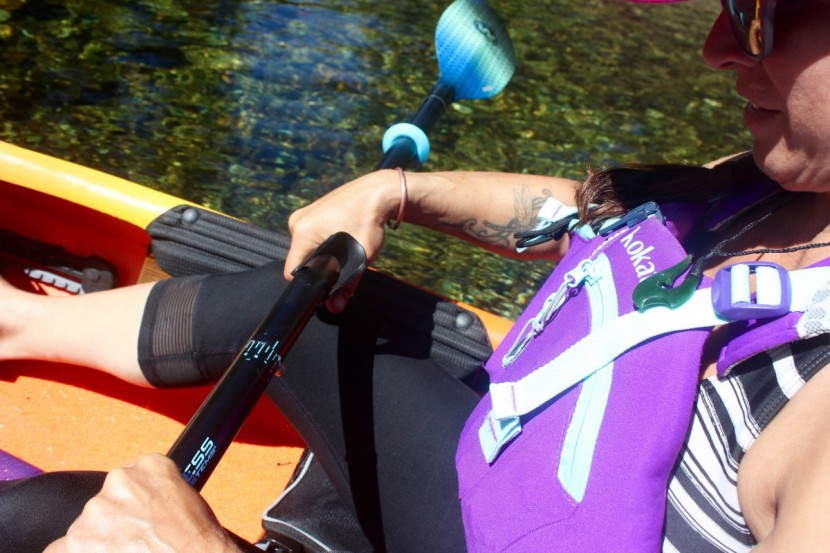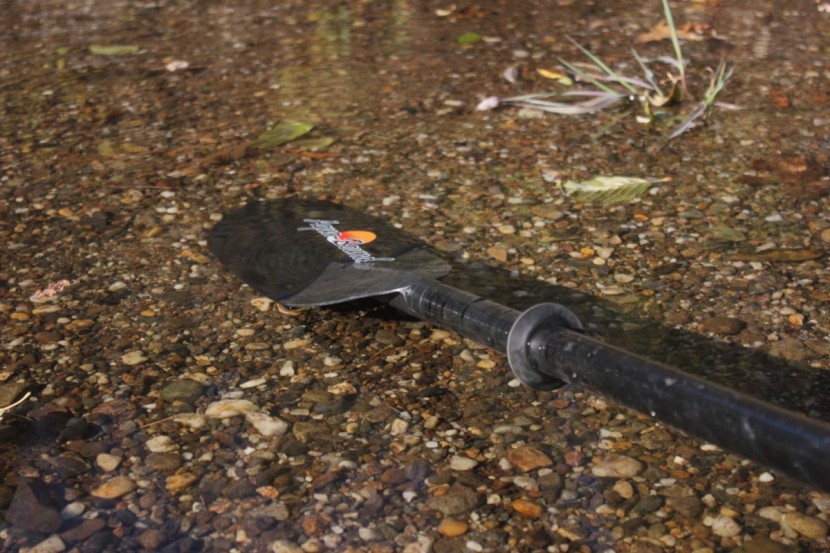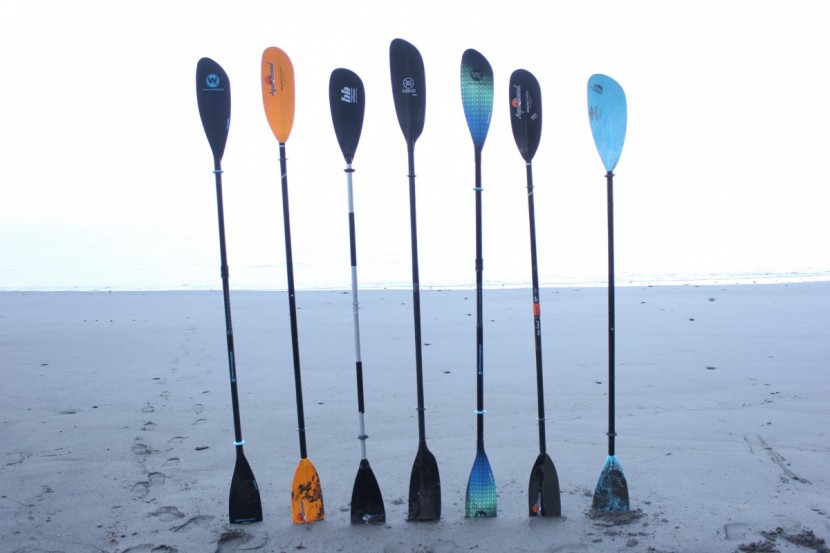Performance
During our extensive field testing, we analyzed each blade's catch and the power it delivered when pulling through the water. We noted any movement, flex, or flutter we experienced during paddle strokes, purposefully putting the paddle under pressure, including paddling in powerful waves and rapids (for which these touring paddles are NOT designed). We considered the shaft's responsiveness, including how it felt to grip in our hands and whether it felt too rigid or too flexible.
To review the power of paddles, we conducted repeated timed sprint tests. We also received extensive feedback from kayakers with a range of skill and experience levels to help us understand how the performance of each paddle may or may not suit different users' needs.
Ease of Adjustment
As soon as we took each paddle out of its packaging, we tested how easy it felt to adjust by timing ourselves while adjusting the feather multiple times. We also timed how long it took to dismantle the paddles, mimicking what it would be like to transport it in two pieces. We noted how easy each paddle was to adjust and dismantle with cold hands and how easy it was to identify to which feather the blades were adjusted to.
We repeated these tests again after three months of using each paddle. This enabled us to see how normal wear and tear affected each paddle ferrule's performance over time.
All tested paddles could have their feather altered; however, some also let us adjust the length. We factored this into our consideration, as well as how easy it was to implement these adjustments in normal conditions and with cold hands.
Locking Mechanism Security
Having a two-piece paddle has distinct advantages; however, when assembled, it is important that it feel like a one-piece paddle. This is surprisingly difficult to achieve. Any give in the join will decrease paddle stroke efficiency. To identify which paddles excelled in this area, we gave each one to blindfolded testers (that were safely monitored). We asked them to identify which were one solid piece and which were two. We let our testers shake the paddle and take a few strokes but did not let them feel the center of the shaft.
After this test, we allowed testers, no longer blindfolded, to paddle around extensively with each of the two-piece paddles. We took note of their experiences, encouraging them to experiment with horizontal and rotational pull on the shaft to see how secure each paddle's locking mechanism felt. During testing, we observed how prone the locking mechanism was to sticking, noting what conditions the paddle was used in and how many hours of use passed before problems started to arise.
Weight
We measured the weight of each paddle using calibrated scales. Because the weight distribution across the paddle (blade/shaft) affects the balance, a balanced paddle will feel lighter than a poorly balanced one of the same mass. Therefore, we also asked our blindfolded testers to try to rank the paddles by weight.
Quality of Construction
We evaluated the construction quality of the paddles using a series of tests exposing each paddle to various stresses, both physical and environmental. We did this when the paddles were new and then reviewed them after set time intervals. We took notes of any wear and tear on the blades and shaft (including the connection point). We purposefully selected testers who can be very tough on gear and did not encourage them to be careful with the paddles. We repeatedly dismantled and adjusted each paddle, often in very sandy conditions, analyzing how the components stood up to the abuse.
We also conducted a series of tests where we pushed off gravel banks and observed whether this caused any wear and tear to the kayak paddle blades.
After all this fun and challenging fieldwork, we returned to the office, assigned scores to each paddle, and explained each of the scores in our main review text. We hope our detailed and diligent work enables you to select the perfect paddle for you and helps make your kayaking experience the very best it can be!



